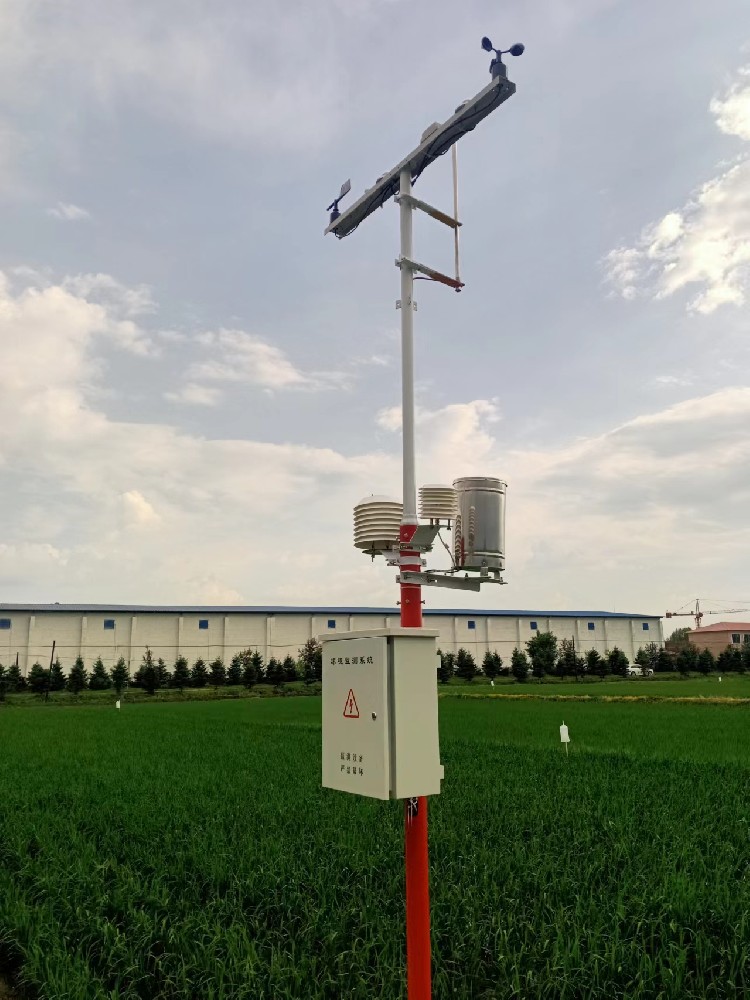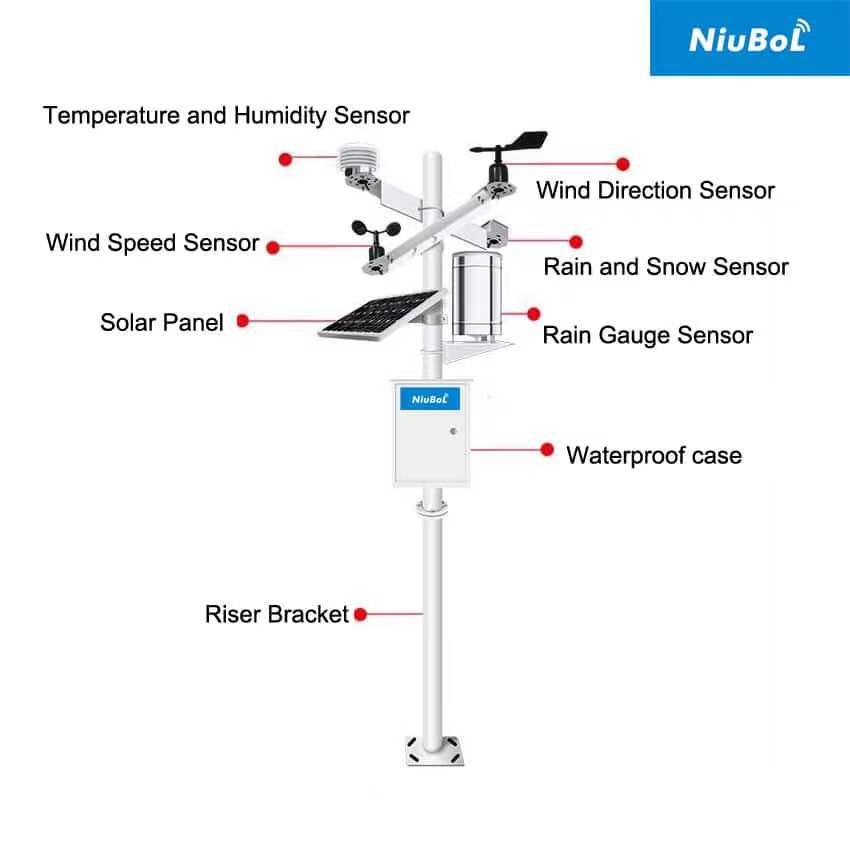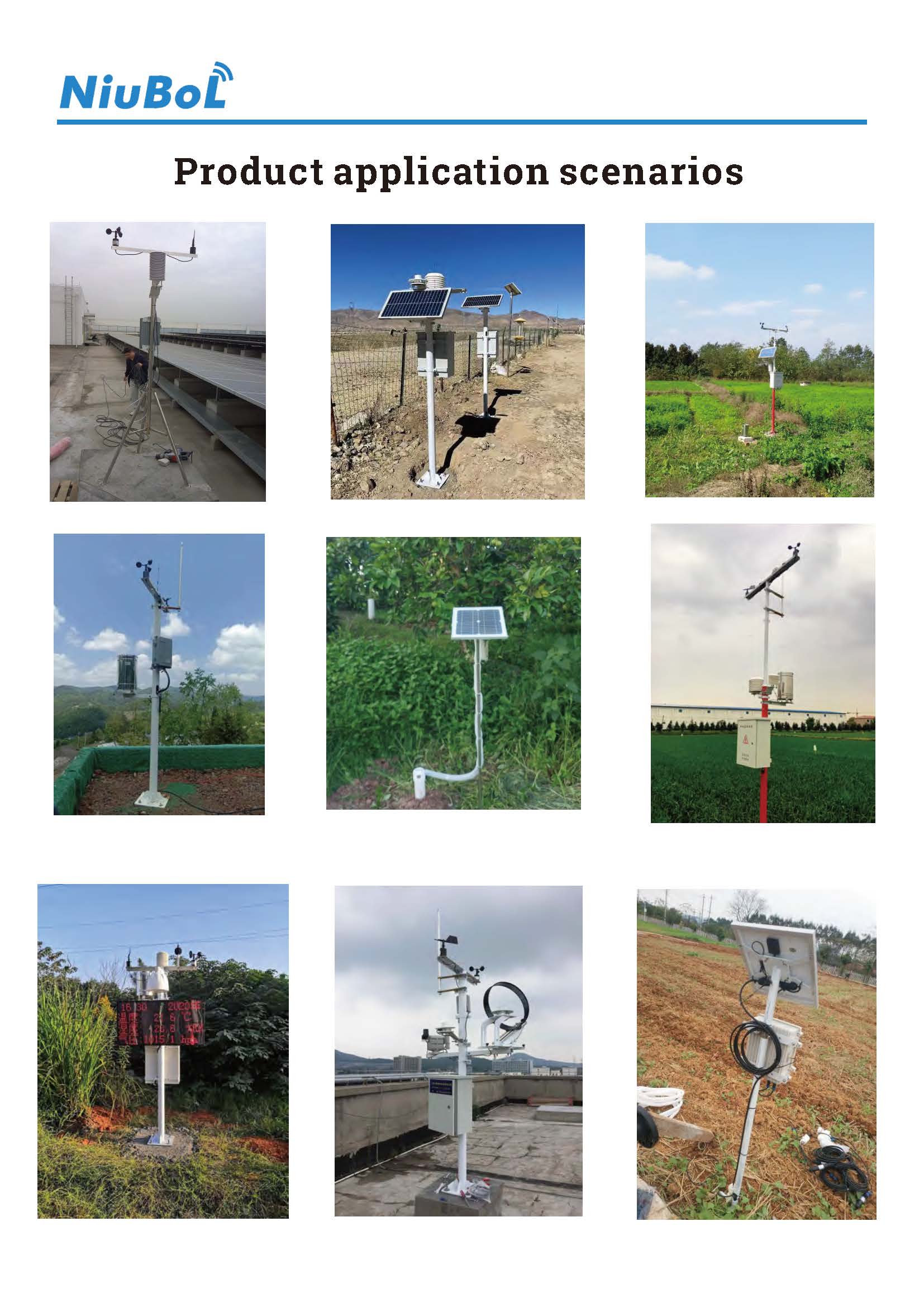

— Blogs —
—Products—
 Consumer hotline +8618073152920
Consumer hotline +8618073152920 WhatsApp:+8615367865107
Address:Room 102, District D, Houhu Industrial Park, Yuelu District, Changsha City, Hunan Province, China
Product knowledge
Time:2025-11-02 15:50:30 Popularity:314
In modern agriculture, energy management, and industrial safety, environmental data has become the core of decision-making. Whether controlling greenhouse humidity or supervising industrial emissions, the precision and reliability of your equipment directly determine data quality and project success.
Inaccurate data that prevents scientific decision-making
High maintenance costs and unnecessary labor
Regulatory compliance risks and potential penalties
Optimize production processes and reduce costs
Detect potential risks early and improve safety
Provide reliable data support for research and policy decisions
Core Components of an Environmental Monitoring System
Sensors and probes: Measure temperature, humidity, CO₂, air particulates, rainfall, solar radiation, etc.
Data logger / recorder: Collect and store sensor data, supporting multi-channel acquisition
Communication module: RS485, 4G, LoRa, or Wi-Fi for remote data transmission
Cloud platform or analysis software: Data visualization, trend analysis, and alarms
Power system: Solar or DC power supply for remote or outdoor deployments
Combined together, these systems enable continuous monitoring, intelligent analysis, and cross-industry visualization.

Before selecting equipment, clearly define what and why you need to measure.
Parameters: Temperature, soil moisture, rainfall, solar radiation, wind speed, CO₂, air humidity
Purpose: Optimize irrigation, fertilization, and crop management
Parameters: Gas emissions, particulates (PM2.5 / PM10), noise, vibration
Purpose: Ensure regulatory compliance and worker safety
Parameters: Air and water quality, radiation, microclimate variations
Purpose: Urban planning, environmental assessment, and health analysis
Clear objectives help determine the required sensor type, accuracy, and durability.
Monitored data: Temperature, humidity, rainfall, atmospheric pressure, wind speed, solar radiation
Applications: Farm irrigation optimization, PV and wind farm management, climate research
Case Study: Smart farms use weather data to control irrigation, boosting yields by 15%.
Monitored data: CO₂, NO₂, SO₂, O₃, PM2.5 / PM10
Applications: Industrial emission monitoring, urban air networks, smart community health alerts
Case Study: Industrial parks use particulate and CO₂ monitoring to predict emissions and avoid environmental fines.

Monitored data: pH, turbidity, dissolved oxygen, conductivity
Applications: Irrigation water management, aquaculture, wastewater regulation
Monitored data: Soil temperature, moisture, salinity, pH
Applications: Precision irrigation, fertilizer optimization, soil health management
Case Study: Integrated irrigation systems with soil sensors reduce water and fertilizer waste by 20%.
Monitored data: Airborne dust accumulation, solar radiation
Applications: PV performance analysis, outdoor scientific research
Case Study: PV projects use dust monitoring to optimize cleaning schedules, increasing power generation by 5–10%.
When selecting monitoring equipment, pay attention to:
Accuracy: Determines data reliability (e.g., ±0.2°C deviation can affect irrigation control).
Durability: Industrial or research-grade devices are suitable for long-term outdoor use.
Data capability: Data loggers must support the required number of sensors and sampling frequency.
Niubol devices undergo multi-point calibration and IP65–IP68 waterproof/dustproof testing, ensuring stable operation even in extreme conditions.
Wired: RS485 / Modbus RTU — ideal for industrial facilities.
Wireless: LoRa — low-power, long-range monitoring.
Real-time networking: 4G / 5G / Wi-Fi — direct cloud platform connection.
Niubol systems integrate with Niubol Cloud or third-party SCADA platforms to achieve:
Real-time visualization
Historical trend analysis and forecasting
Automatic alerts via email or SMS

Power: Solar + battery systems suitable for off-grid regions.
Installation: Mounting brackets, radiation shields, and anti-corrosion design.
Maintenance: Modular design allows easy sensor replacement and calibration.
| Feature | Portable System | Fixed Station |
| Mobility | Easy to move, ideal for temporary surveys | Permanent installation |
| Power | Battery-powered | Solar / AC |
| Accuracy | Medium | High |
| Data Frequency | On-demand | Continuous |
| Use Case | Field research | Long-term environmental monitoring |
Weather Stations: Comprehensive climate data acquisition
Soil Sensors: Precision irrigation and fertilization
Water Quality Monitors: Resource research and management
Niubol Cloud: Real-time analytics and automated reporting
Integration transforms standalone devices into a smart environmental management system, empowering multi-industry decisions.

How to choose sensor accuracy?
Research or industrial compliance: ±0.1–0.5%
Agriculture: ±2–3% is sufficient
Can I mix sensor brands?
Yes, as long as they support standard protocols (Modbus / RS485).
What is the sensor lifespan?
Typically 3–7 years, extendable through calibration kits.
Can data be accessed remotely?
Yes, via 4G / LoRa to the Niubol Cloud dashboard.
Best solution for off-grid remote projects?
Solar-powered data logger + LoRa + IP65 sensors for reliable year-round operation.
Comprehensive product coverage: From individual sensors to complete monitoring stations
Customization: OEM/ODM designs for project-specific requirements
Global support: Technical training, remote diagnostics, and calibration
Proven success: Widely adopted in PV plants, smart cities, and research institutions

Planning a new project?
Contact Niubol today for system design, sensor selection, and integration solutions.
Email: sales@niubol.com
Website: www.niubol.com
Choosing environmental monitoring equipment is not just about purchasing sensors — it’s about laying the foundation for data-driven decision-making. By defining objectives, selecting durable and accurate equipment, and integrating real-time data management, you gain reliable insights and long-term value. The Niubol ecosystem — from sensors to cloud analytics — ensures your monitoring projects run accurately, efficiently, and sustainably.
Prev:Niubol High-Precision Environmental Sensors and Monitoring Devices
Next:Intelligent Sensors and IoT Solutions | Agriculture, Environment, and Meteorological Monitoring
Related recommendations
Sensors & Weather Stations Catalog
Agriculture Sensors and Weather Stations Catalog-NiuBoL.pdf
Weather Stations Catalog-NiuBoL.pdf
Related products
 Combined air temperature and relative humidity sensor
Combined air temperature and relative humidity sensor Soil Moisture Temperature sensor for irrigation
Soil Moisture Temperature sensor for irrigation Soil pH sensor RS485 soil Testing instrument soil ph meter for agriculture
Soil pH sensor RS485 soil Testing instrument soil ph meter for agriculture Wind Speed sensor Output Modbus/RS485/Analog/0-5V/4-20mA
Wind Speed sensor Output Modbus/RS485/Analog/0-5V/4-20mA Tipping bucket rain gauge for weather monitoring auto rainfall sensor RS485/Outdoor/stainless steel
Tipping bucket rain gauge for weather monitoring auto rainfall sensor RS485/Outdoor/stainless steel Pyranometer Solar Radiation Sensor 4-20mA/RS485
Pyranometer Solar Radiation Sensor 4-20mA/RS485
Screenshot, WhatsApp to identify the QR code
WhatsApp number:+8615367865107
(Click on WhatsApp to copy and add friends)
